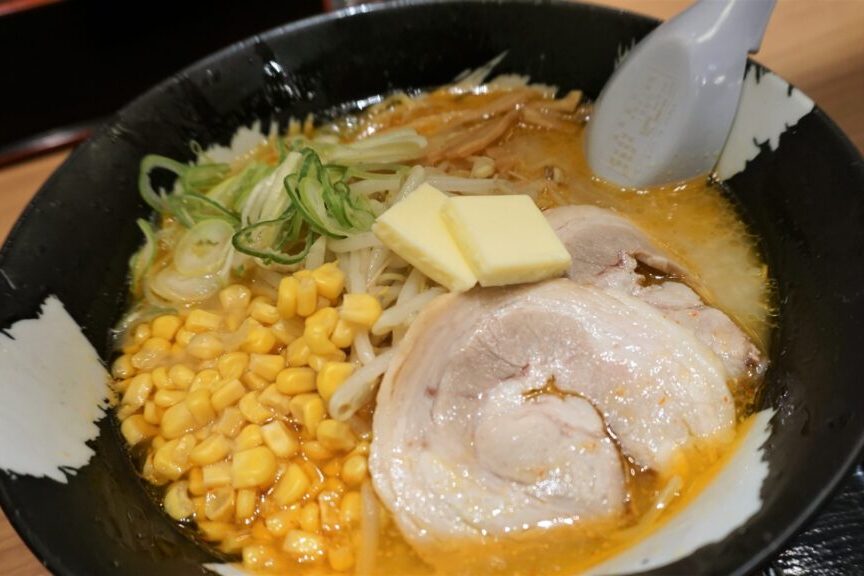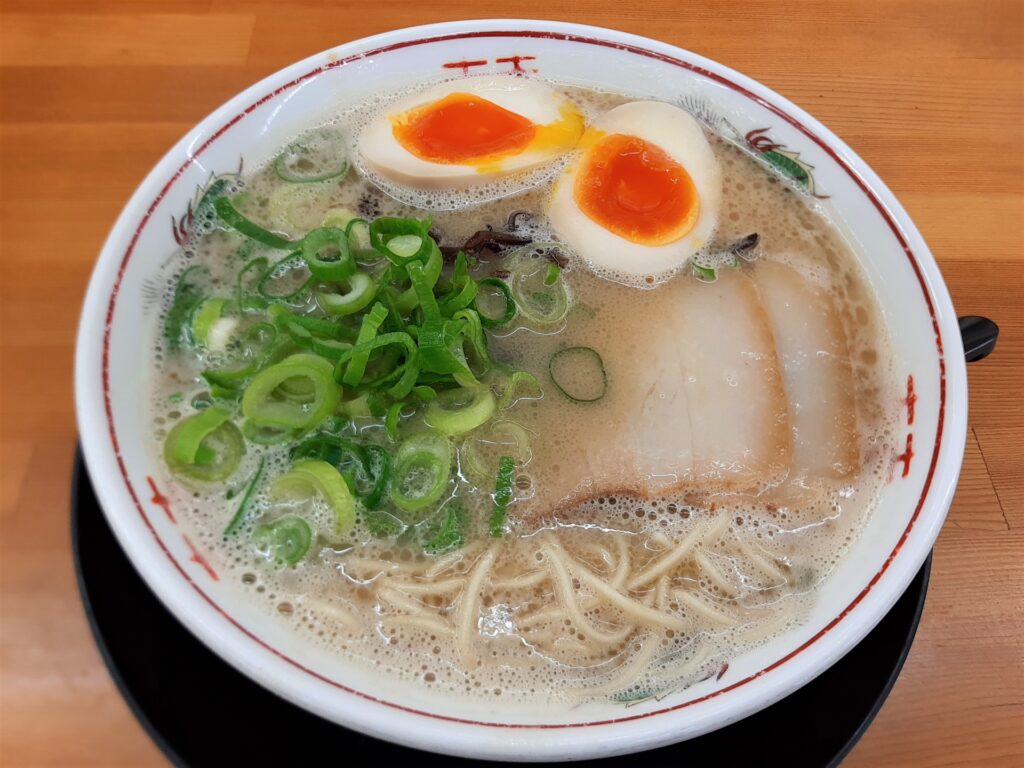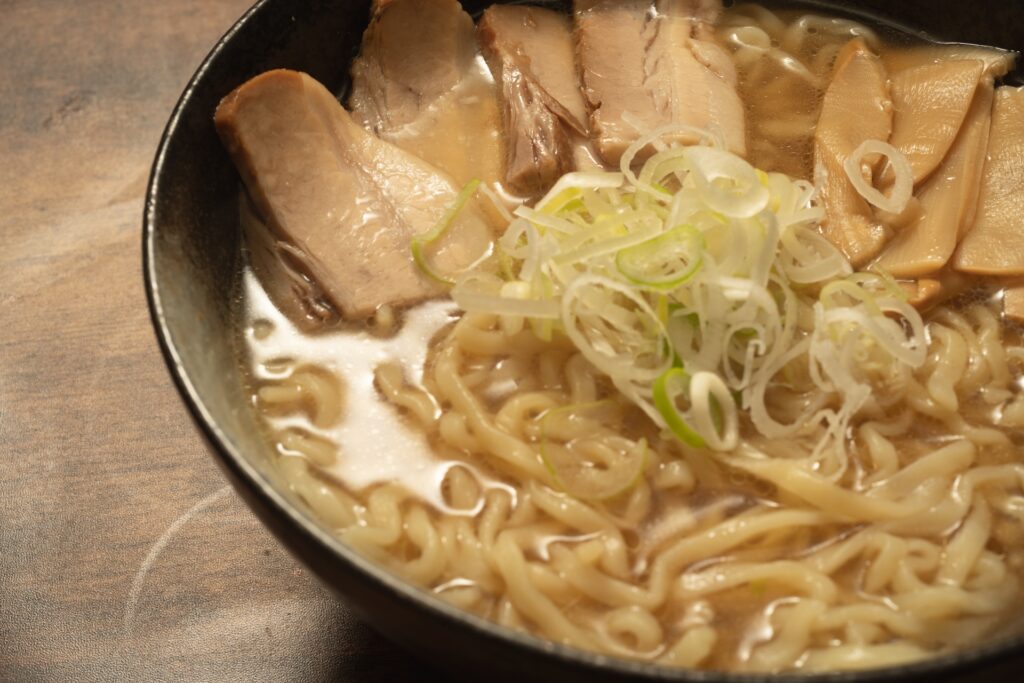
Sapporo Ramen
“Sapporo Ramen” refers to the general term for ramen that originated in Sapporo City, Hokkaido. It is one of the local ramen dishes (local gourmet dishes).
history(歴史)
The origin of Sapporo Ramen dates back to 1922 when a Chinese restaurant named “Takeya Shokudo” in Sapporo City, Hokkaido, started serving “Rousu-men” (meat noodle soup). However, due to wartime resource control during World War II, ramen shops disappeared, and the source of the current style began with the thick pork bone soup ramen made by returnees at food stalls after the war. In 1955, Morito Omiya of “Aji no Sanpei” developed miso ramen, which became known nationwide. This led to the establishment of “Miso Ramen” as a style of Sapporo Ramen. However, it’s worth noting that many Sapporo ramen shops offer three flavors: soy sauce, miso, and salt, and are not particularly specialized in only miso ramen. Afterwards, the popularity of “Sapporo” as a brand name in instant ramen products increased its nationwide recognition. Additionally, from around 1965, more and more shops in Tokyo started to display “Sapporo Ramen” on their signs, and “Dosanko”, which became a national chain, was founded in 1967. Finally, in 2001, ramen from Hokkaido, including Sapporo Ramen, was recognized as a Hokkaido heritage.
noodles(麺)
Due to the popularity of the “chijire noodles” from Nishiyama Noodle Factory used by “Aji no Sanpei,” the number of shops using this noodle factory in Hokkaido has increased. These noodles are known for their stickiness. In the past, many shops used noodles from other noodle factories like Nishiyama, but recently, new noodle factories have emerged and the competition for market share has intensified. Some shops even make their own unique noodles. The founder of Horikawa Noodle Factory, Juichi Horikawa, is known for inventing the automated production method of “chijire noodles” and a machine that cuts noodles into individual servings. Typically, noodles of thickness number 22 are used.
soup(スープ)
Sapporo ramen is characterized by a soup made from boiling pork bones and other ingredients, often with lard floating on top to prevent it from cooling down quickly. This style was initiated by Kanashichi Matsuda of “Ryuhou”, who primarily used soy sauce for seasoning. This was because Matsuda, having lived in China before the war, noticed that Japanese people had a preference for adding soy sauce to any Chinese cuisine.
ingredients(具材)
Sapporo ramen typically includes toppings such as char siu, bamboo shoots, green onions, as well as stir-fried vegetables like onions, cabbage, and bean sprouts. This style was pioneered by Morihiro Omiya from “Aji no Sanpei”. He thought of stir-frying vegetables to pass the time while the noodles were boiling. Bean sprouts, which have become a symbol of Sapporo ramen, were initially used as a substitute for the high-priced onions after the war. At “Aji no Sanpei”, minced meat is used for miso ramen instead of char siu, which is a practice adopted by many other shops for their miso ramen.



